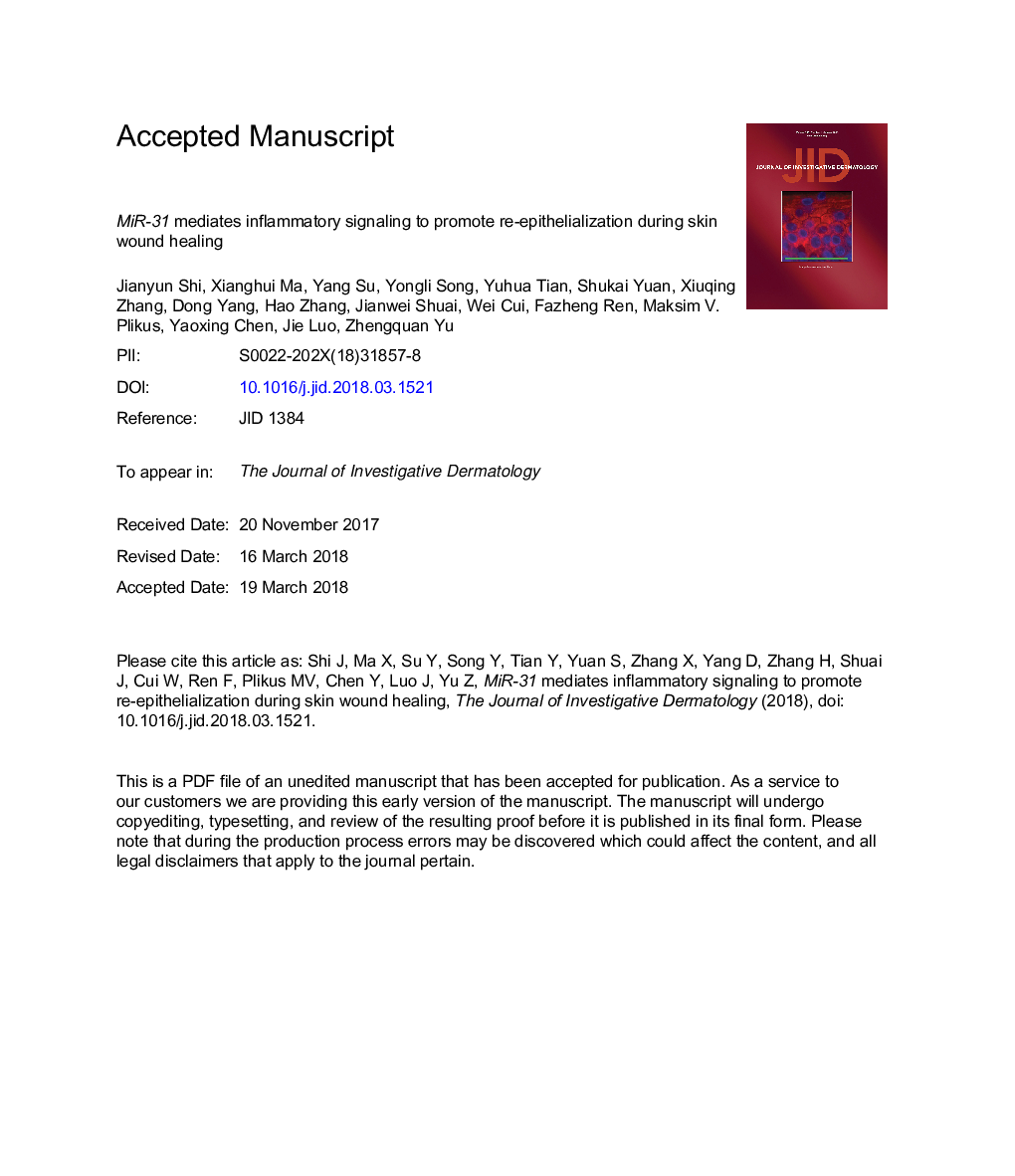| Article ID | Journal | Published Year | Pages | File Type |
|---|---|---|---|---|
| 10217021 | Journal of Investigative Dermatology | 2018 | 33 Pages |
Abstract
Wound healing is essential for skin repair after injury, and it consists of hemostasis, inflammation, re-epithelialization, and remodeling phases. Successful re-epithelialization, which relies on proliferation and migration of epidermal keratinocytes, requires a reduction in tissue inflammation. Therefore, understanding the molecular mechanism underlying the transition from inflammation to re-epithelialization will help to better understand the principles of wound healing. Currently, the in vivo functions of specific microRNAs in wound healing are not fully understood. We observed that miR-31 expression is strongly induced in wound edge keratinocytes, and is directly regulated by the activity of NF-κB and signal transducer and activator of transcription 3 signaling pathways during the inflammation phase. We used miR-31 loss-of-function mouse models to demonstrate that miR-31 promotes keratinocyte proliferation and migration. Mechanistically, miR-31 activates the Ras/mitogen-activated protein kinase signaling by directly targeting Rasa1, Spred1, Spred2, and Spry4, which are negative regulators of the Ras/mitogen-activated protein kinase pathway. Knockdown of these miR-31 targets at least partially rescues the delayed scratch wound re-epithelialization phenotype observed in vitro in miR-31 knockdown keratinocytes. Taken together, these findings identify miR-31 as an important cell-autonomous mediator during the transition from inflammation to re-epithelialization phases of wound healing, suggesting a therapeutic potential for miR-31 in skin injury repair.
Keywords
Related Topics
Health Sciences
Medicine and Dentistry
Dermatology
Authors
Jianyun Shi, Xianghui Ma, Yang Su, Yongli Song, Yuhua Tian, Shukai Yuan, Xiuqing Zhang, Dong Yang, Hao Zhang, Jianwei Shuai, Wei Cui, Fazheng Ren, Maksim V. Plikus, Yaoxing Chen, Jie Luo, Zhengquan Yu,
